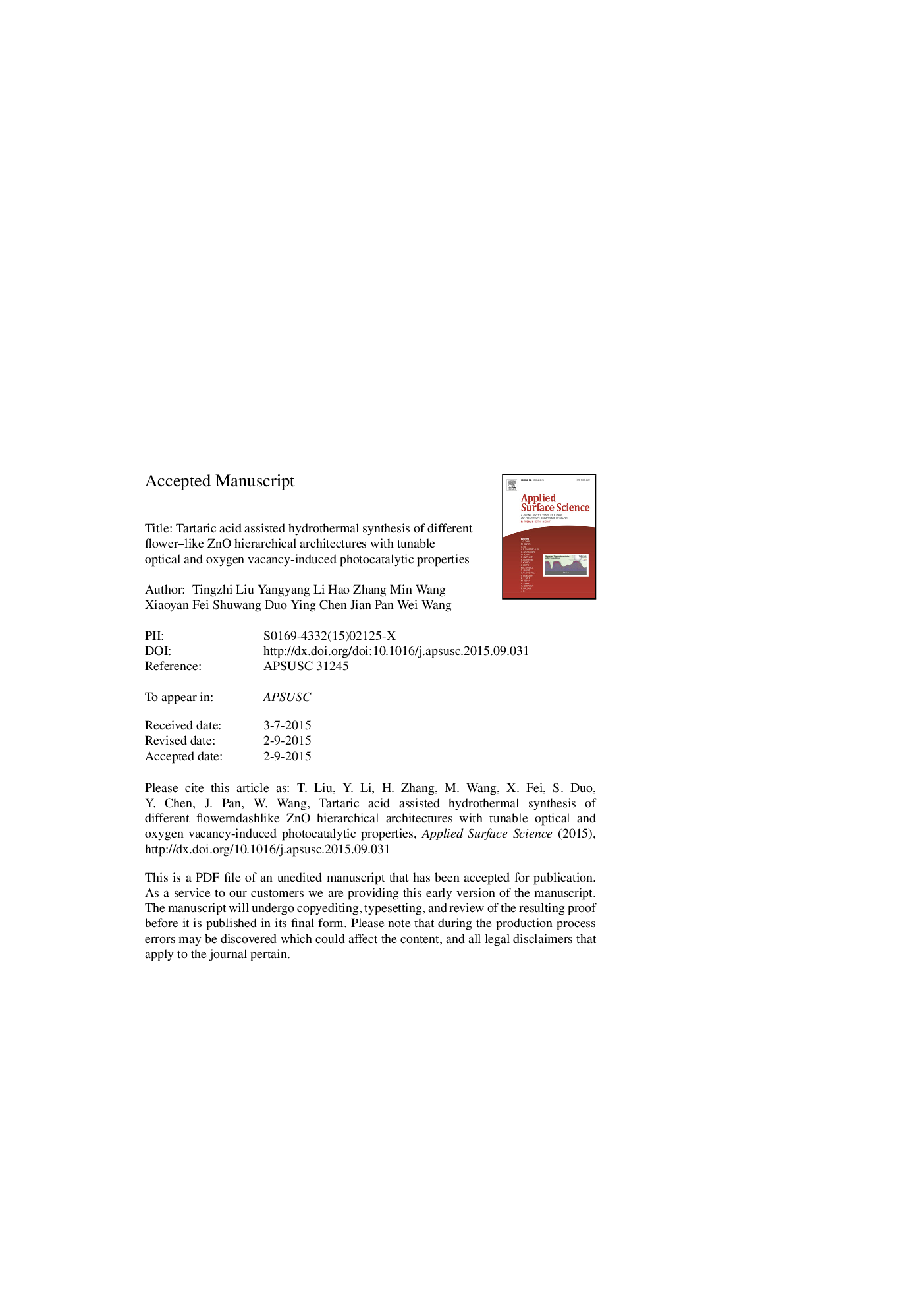| Article ID | Journal | Published Year | Pages | File Type |
|---|---|---|---|---|
| 5348361 | Applied Surface Science | 2015 | 44 Pages |
Abstract
Different flower-like ZnO hierarchical architectures were prepared by tartaric acid assisted hydrothermal synthesis, especially four flower-like ZnO nanostructures were obtained simultaneously under the same reaction condition. The cauliflower-like ZnO is assembled by spherical shaped nanoparticles, and the chrysanthemum-like and other flower-like ZnO nanostructures are assembled by hexagonal rods/prisms with from planar to semi-pyramid, and to pyramid tips. TA acts as a capping agent and structure-directing agent during the synthesis. All ZnO possess the hexagonal wurtzite structure. The PL spectra can be tuned by changing TA concentration. XRD, PL and Raman spectra confirmed that oxygen vacancies mainly come from the ZnO surface. The flower-like samples of 1:4.5 and 1:3 with the largest aspect ratios have highest photocatalytic performance. They decompose 85% MB within 60Â min. Combining PL Gaussian fitting with K, the higher content of oxygen vacancy is, the higher photocatalytic activity is. The enhanced photocatalytic performance is mainly induced by oxygen vacancy of ZnO. The possible formation mechanism, growth and change process of flower-like ZnO were proposed.
Related Topics
Physical Sciences and Engineering
Chemistry
Physical and Theoretical Chemistry
Authors
Tingzhi Liu, Yangyang Li, Hao Zhang, Min Wang, Xiaoyan Fei, Shuwang Duo, Ying Chen, Jian Pan, Wei Wang,
